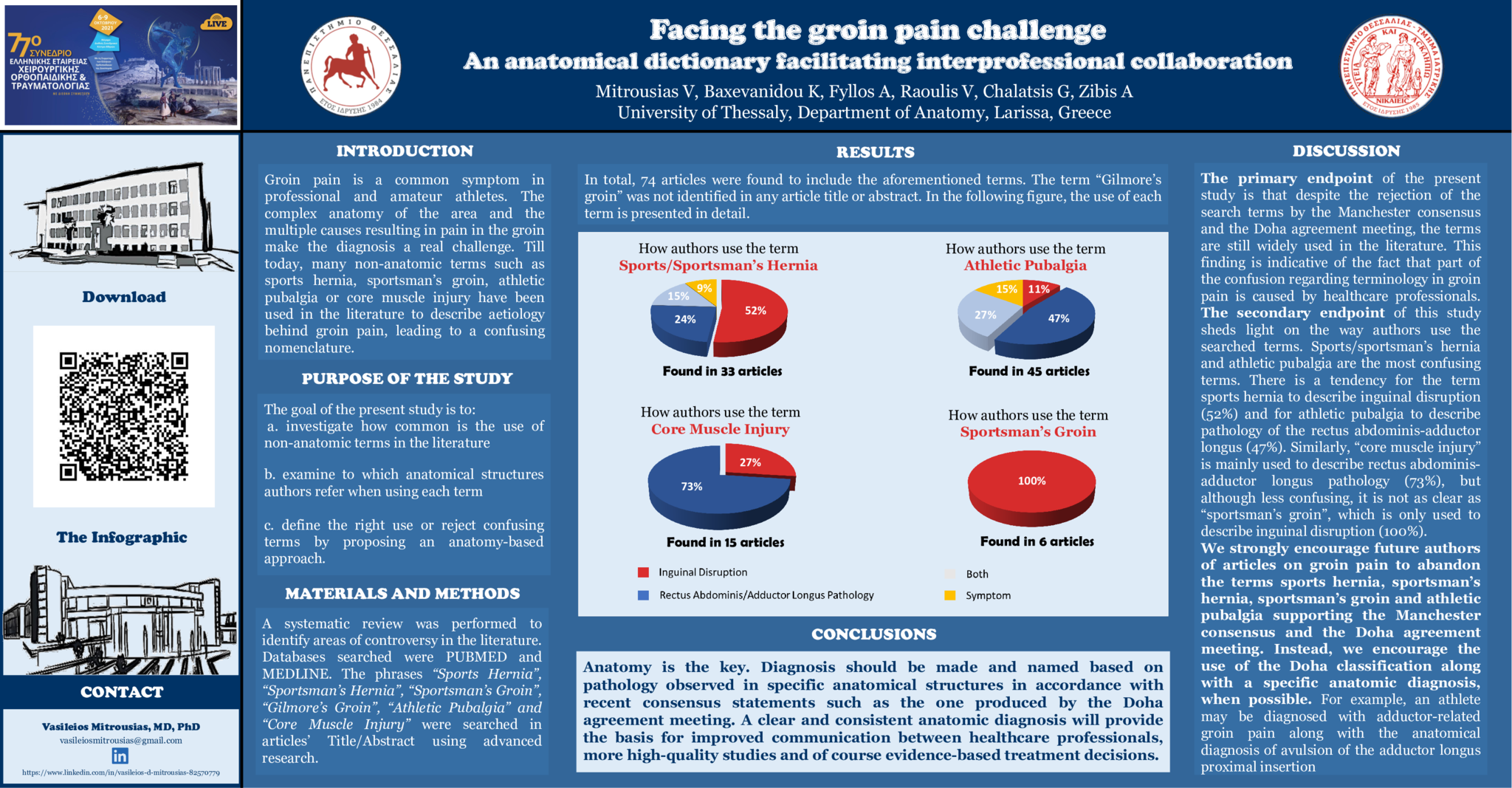INTRODUCTION/PURPOSE: Groin pain is not only a diagnostic challenge but also a terminology enigma. It is true, although not widely perceived, that the words used to describe a medical condition influence patients' perspective on which treatment they should receive but also physicians' final decision on which treatment to provide. Despite the Doha agreement on terminology in groin pain, published in 2015, tricky terms like "sports hernia" or "athletic pubalgia" are still being used to describe a wide variety of pathology in the area. MATERIAL AND METHODS: Electronic databases (PubMed, MEDLINE) were searched for articles published after the Doha agreement (2015-2020) and containing one of the following terms in their title/abstract: "sports hernia", "sportsmans' hernia", "sportsman groin", "athletic pubalgia", "core muscle Injury" and "Gilmore's groin". The anatomical structures reported in each article were recorded. Using a 3D, human-anatomy software, an anatomical dictionary was created, matching each term to the relevant anatomical structure. RESULTS: Database search revealed 74 relevant articles. The anatomical dictionary is available to download by scanning the QR code on the poster. Each term is accompanied by relevant 3D anatomy images. Proper use of each term is highlighted by also reporting past misuse of the term. CONCLUSION: Groin pain's dark reputation is not only due to the complex anatomy of the area but also to the confusing nomenclature used. This study aims to help coaches, physiotherapists, physicians, and sports' professionals to make a step forward in interprofessional communication, which will be eventually beneficial for athletes who experience groin pain.
- 56 προβολές
Συγγραφέας
Vasileios Mitrousias
MD, PhD
Resident Orthopaedic Surgeon, General University Hospital of Larissa, Greece
Guest Lecturer in Anatomy, University of Thessaly
- 73 προβολές




